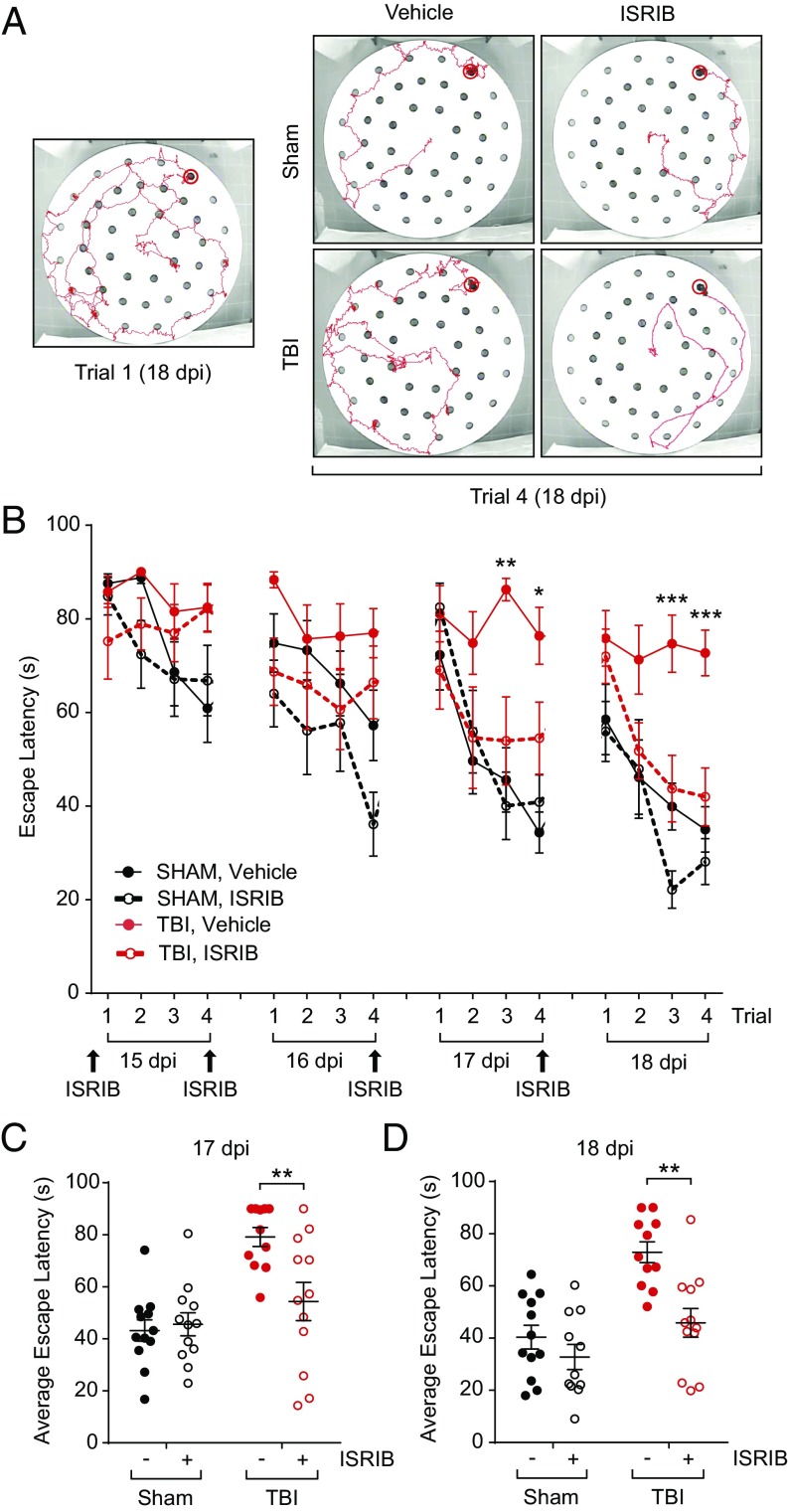Fig. 4.
ISRIB treatment rescues TBI-induced behavioral deficits on the delayed-matching-to-place paradigm 14 d after concussive injury. (A) Representative tracks of trials on the modified Barnes maze of the DMP assay. During trial 1 of each day, animals did not know the escape tunnel location and did not find it quickly (trial 1, Left). By trial 4, the animals had learned the location of the escape tunnel and took significantly less time on the trial. ISRIB-treated TBI mice showed similar performance as both sham groups on day 4, whereas vehicle-treated TBI mice took longer to escape (Right). (B) Animals were injected the night before the first day of behavior (14 dpi) and after the last trial of each day (15–17 dpi; n = 11–12 per group). Animals that received sham surgeries were able to learn the location of the escape tunnel over the course of each day (vehicle: black solid circle, solid line; ISRIB treated: black open circle, dotted line). TBI animals given vehicle injections (red solid circle, solid line) took longer to find the escape tunnel, whereas TBI animals given ISRIB (red open circle, dotted line) did significantly better than their vehicle-treated counterparts. Data are means ± SEM (Bonferroni post hoc test; *P < 0.05, **P < 0.01, ***P < 0.001). (C) Individual animal performances averaged across trials 2, 3, and 4 on day 3 of the DMP (17 dpi). TBI animals treated with ISRIB were significantly faster at locating the escape location than their vehicle-treated, TBI counterparts. Data are means ± SEM (Bonferroni post hoc test; **P < 0.01). (D) Individual animal performances averaged across trials 2, 3, and 4 on day 4 of the DMP (18 dpi). ISRIB-treated TBI animals were significantly faster in locating the escape tunnel than the vehicle-treated TBI group. Data are means ± SEM (Bonferroni post hoc test; **P < 0.01).

